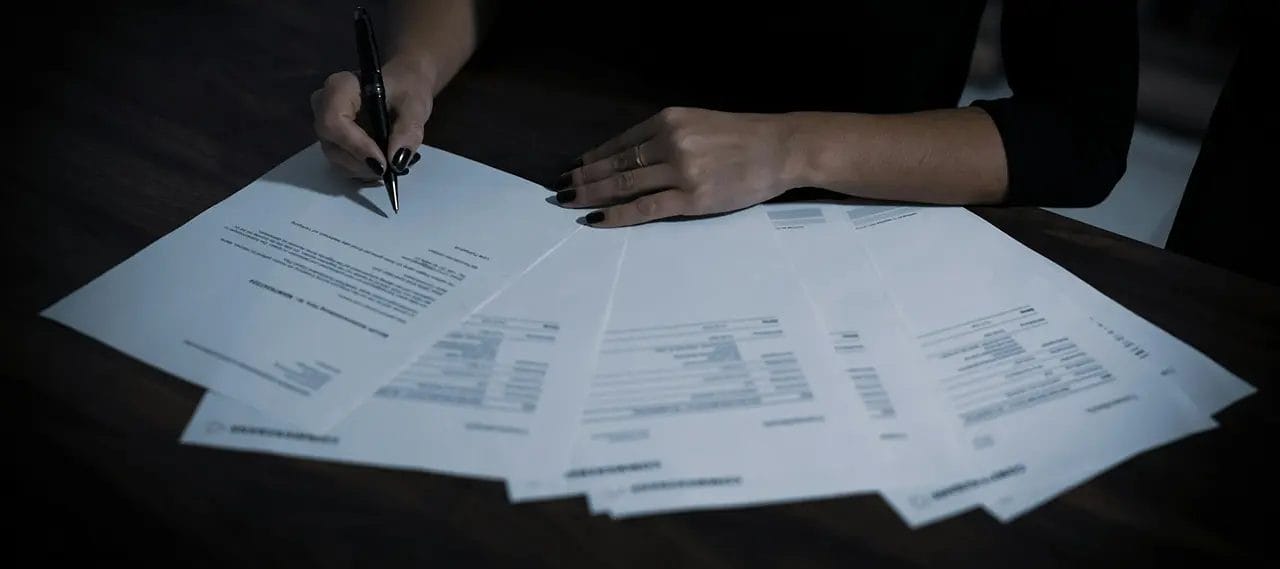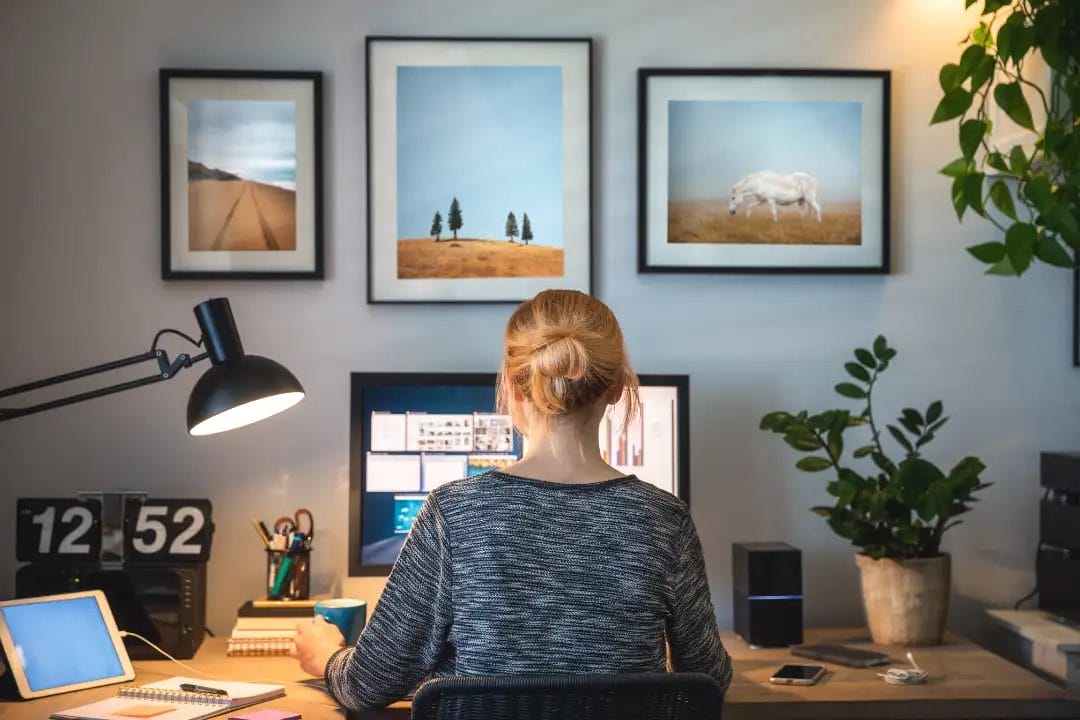

As a small business owner, understanding and utilising the concept of visual narrative can be an invaluable tool. In a digital age saturated with content, our brains naturally lean towards digesting information presented visually. Research has shown that the human brain processes images 60,000 times faster than text, making visual storytelling an incredibly effective way to engage your audience.
For example, consider your website’s homepage. Instead of huge chunks of text detailing your products or services, imagine using striking images or graphics, which tell the story of your business and guide the potential customer on their journey. A bakery could spotlight beautiful, high-quality photos of artisan bread, displaying the baking process and illustrating the love and craftsmanship behind each loaf.
Another key advantage of visual narrative is its capacity to bolster your company’s brand identity. In essence, your brand’s narrative is the story of your business – it’s who you are, what you do, and why you do it. By deploying consistent and compelling imagery across your website, you’re telling this story in a manner that’s quick and easy to understand.
For instance, a small environment-conscious clothing brand could use visuals of their garments made from recycled materials, their team actively cleaning up local beaches, and their customers wearing the eco-friendly items. These visuals narrate the brand’s dedication to sustainability, ensuring a stronger emotional connection with environmentally conscious consumers.
Moreover, integrating visual narratives can significantly enhance customer engagement. Visitors to your website are more likely to stay and explore if they’re met with captivating visuals that communicate your message instantly. Goods or services presented in a visually compelling manner could potentially lead to higher customer conversion rates.
Take, for example, a family-run bed and breakfast in the British countryside. Rather than lengthy descriptions, high-quality images of the quaint rooms, stunning surroundings, and delicious home-cooked breakfasts would create an attractive visual narrative for prospective guests. Showcasing the business in this way could navigate more visitors toward booking, boosting your business’s success.
As a small business owner, you may be asking: Why does graphic design matter in my website? The answer is not merely about aesthetics. Visually engaging graphics can create an immersive user experience, understandable content, and a memorable brand—to name just a few of the advantages.
For instance, imagine your business offers a range of bespoke furniture. An eye-catching, well-crafted graphic on your homepage highlighting a beautifully-upholstered wingback chair could immediately show visitors your skill, quality, and attention to detail. A clear infographic showing the process of creating this piece may further engage customers, making them appreciate the work that goes into each product and feel a more personal connection to your business.
Good graphic design is a powerful tool for boosting customer engagement. It can attract attention, elicit emotions, and simplify complex information. For example, instead of writing lengthy product descriptions, why not make use of infographics or illustration? This can turn an otherwise tedious process into something more enjoyable and easier to understand.
Imagine your small retail shop sells various types of tea sourced from around the world. A colourful graphical map showing where each type of tea originates can add a sense of discovery and adventure for your customers while educating them about their favourite brew. This enhanced interaction can not only keep visitors on your website longer but also encourage them to explore and purchase more.
By providing consistent and captivating visual content, you establish strong brand recognition, which can lead to higher customer retention. For example, if your bakery creates a distinctive whimsical logo and uses consistent branding colours and fonts on your website, customers will remember and identify with your brand more easily.
Moreover, visual storytelling can evoke emotions, creating a deeper connection with customers. A series of photographs showing the process of your master baker kneading dough and crafting beautiful pastries can convey passion, craftsmanship and authenticity—associations that customers will likely remember and relate to.
Utilising striking and consistent graphic design in your website can set your small business apart, boost customer engagement, and strengthen customer retention. Keep in mind that as much as well-crafted words tell a story, visually appealing graphics can powerfully narrate your brand’s identity and values at first glance.
In today’s competitive marketplace, as a small business owner, maintaining a consistent brand identity is paramount. This isn’t just about your logo or tagline; it’s about making sure that every piece of visual content conveys the same message and evokes the same emotions in your customers. This is where the importance of cohesive visual content comes into play.
For example, if you’re running an organic bakery, your branding might emphasise freshness, quality, and sustainability. Your website, then, should be designed to convey these attributes visually through its choice of colours, typography, imagery, and layout. Including lots of high-quality photos of your freshly baked goods could help attract customers, whilst communicating your business ethos through choice of colours and design elements could build trust and loyalty.
Cohesive visual content doesn’t stop at your website. It extends to every platform where your brand has a presence — be it social media, print advertisements, or even your in-store signage. Maintaining a consistent look and feel across all these channels helps reinforce your brand identity.
Let’s take a vintage clothing boutique as an example. If your brick-and-mortar shop is furnished with nostalgic decor, your website design should mirror that vibe. Likewise, your Instagram posts might include sepia-toned images showcasing your apparel, paired with nostalgic captions. This repeated exposure to a singular aesthetic can strengthen your brand image in the minds of customers.
As a small business owner, you have a unique story to tell. Utilising graphics and imagery on your website can provide an engaging way to share that narrative while reinforcing your brand identity. An infographic charting the journey of a locally sourced product, or a photo collage depicting a day in the life of your business can offer a unique look behind the scenes, fostering a deeper connection with your customers.
Consider a family-run farm shop. A timeline graphic illustrating your farm’s history, paired with photos showcasing the seasonal nature of your stock, can visually represent your commitment to local sourcing and community support. This not only reinforces your brand identity but also transforms your website into a visual storytelling platform that goes beyond mere selling to create an immersive customer experience.
In a world inundated with data, small businesses face the challenge of how to present their complex information in an understandable and appealing manner. Thankfully, infographics come to the rescue, transforming convoluted statistics into digestible visuals. Whether you want to showcase your business growth, dissect your budgeting, or highlight customer demographics, infographics are an invaluable tool to convey this data in a manner that’s easy to comprehend and memorable for your audience.
Research shows that humans process visuals 60,000 times faster than text. This means an infographic – a powerful mix of imagery, charts, and minimal text – can communicate data far quicker and more efficiently than words alone. For instance, if you aim to showcase the geographical distribution of your consumers, instead of writing long paragraphs detailing each region’s statistics, you could create a colourful map highlighting the density of customers in different areas. Not only is such a visual more engaging, but it also simplifies complex data and allows your audience to grasp your message almost instantly.
Visual content draws in more consumer attention than plain text. A well-designed infographic is not just a tool for understanding; it’s also a subtle marketing instrument. It can help grab the viewer’s attention, keep them on your website longer, and potentially increase conversion rates. For example, if you have a complex pricing structure with various packages, discounts, and add-ons, you could use a tailored infographic to clearly lay out each option and its benefits. Such a design would be far more engaging than a simple list of prices.
When you take the time to breakdown and visually represent your data, it communicates to your audience that you understand your trade and are an authoritative figure in your field. For instance, in an infographic detailing the services you’ve provided over the year, segmented by sectors or types of clients, you’ll not only show the breadth of your experience but also help potential clients understand the depth of your knowledge and expertise. This can instil trust, foster customer loyalty, and ultimately grow your business.
The power of infographics extends beyond aesthetics; these visuals are a cornerstone for effective communication in the digital age, converting the seemingly complicated into easily understood graphics. As a small business owner, employing infographics in your website design is a proven way to boost both customer engagement and persuasion.
As the owner of a small business, it’s essential to attract and retain customers. One innovative way to do this is through the effective use of visual storytelling in web design. What does this entail? It’s all about representing your brand story through intriguing graphics and images that not only grab visitors’ attention but also make them understand your brand ethos and offerings clearly.
For instance, consider the case of Innocent Drinks, a British smoothie and juice company. Their website effectively utilises playful visuals and colourful, easy-to-understand infographics, refreshing the brand’s image while conveying information about their healthful products. This strategy has been successful, and the brand’s unique visual narrative helps set it apart in an oversaturated market.
Engaging your audience with interactive elements on your website can significantly enhance user experience, and consequently, boost business. Incorporating visual cues that guide users to navigate your site intuitively or inviting users to interact with visual elements, for instance, can foster client engagement.
A splendid example in this regard is the British Broadcasting Corporation’s (BBC) history of the world webpage. It uses a timeline filled with vivid imagery and detailed descriptions related to historical events. Users can click on these images to further delve into each event, promoting user interaction and generating high engagement levels.
Visual narratives are incredibly effective at eliciting emotional responses. By creating an emotional connection between your customer and your brand, you increase brand loyalty and the likelihood of repeat business.
A powerful example of this is the web presence of British charity, Dogs Trust. They use poignant images and touching stories to highlight dogs in need of adoption. These narratives evoke empathy in website visitors, encouraging more people to consider adopting from the shelter or donating to their cause.
In conclusion, as a small business owner, integrating visual storytelling into your web design can deliver significant benefits. It offers a compelling way to connect with your audience, differentiate yourself from competitors and ultimately, drive more business.
If you would like any guidence on how to move your business forward, G&G has the necessary skillset to help you manage your business more efficiently and more profitably. if you would like some assistance, please dont hesitate to contact us.
From business planning or Business Administration to assisting with your organisations growth, we are happy to advise and help where we can. Get in touch to start your no-obligation consultation!
Share this article: